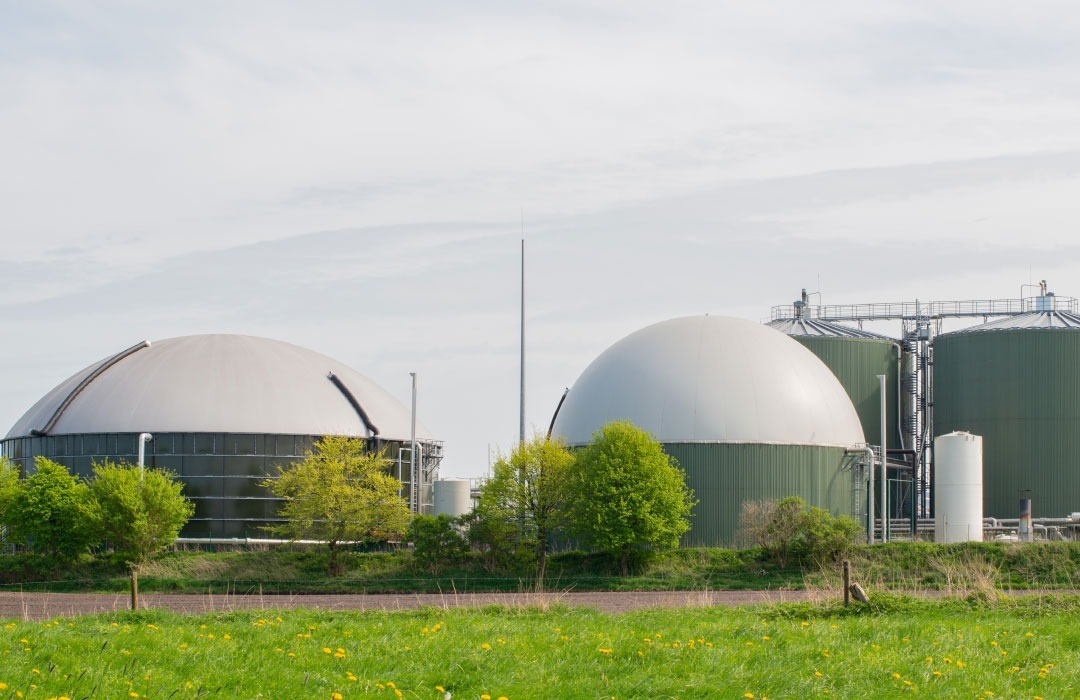Why is biogas gaining investor attention?
The global shift toward clean energy
As the world intensifies efforts to combat climate change, clean energy sources are gaining traction. Biogas, derived from organic waste, offers a renewable and sustainable alternative to fossil fuels. Governments and corporations are increasingly prioritizing decarbonization, making biogas a strategic asset in the energy transition.
Biogas as a scalable and circular solution
Biogas systems utilize waste from agriculture, industry, and municipalities, converting it into energy and fertilizer. This circular approach not only reduces emissions but also supports local economies. Scalability across rural and urban settings makes biogas a versatile investment opportunity.
Policy support and environmental targets in the US and beyond
Incentives such as tax credits, renewable energy mandates, and carbon pricing mechanisms are driving biogas adoption. The U.S. Inflation Reduction Act and similar policies globally are catalyzing investment in biogas infrastructure and innovation.
What makes a biogas project investment-ready?
Technical feasibility and location
A viable biogas project requires a thorough technical assessment, including site suitability, technology selection, and grid connectivity. Proximity to feedstock sources and energy consumers enhances project efficiency and reduces costs.
Feedstock availability and infrastructure
Reliable access to organic waste is critical. Projects must secure long-term feedstock contracts and assess logistics for collection and processing. Existing infrastructure, such as pipelines and digesters, can significantly lower capital expenditures.
Power purchase agreements (PPAs) and offtake security
Securing PPAs or offtake agreements with utilities or industrial buyers ensures predictable revenue streams. Investors favor projects with strong contractual frameworks that mitigate market price volatility.
Key returns and financial metrics in biogas projects
Understanding ROI in biogas: IRR, payback period & margins
Investors evaluate internal rate of return (IRR), payback period, and operating margins to assess project viability. Biogas projects typically offer IRRs between 10–18%, with payback periods of 5–8 years depending on scale and incentives.
Financial model scenarios: base case vs. upside
Robust financial models include conservative (base case) and optimistic (upside) scenarios. Sensitivity analyses help investors understand risks related to feedstock costs, energy prices, and policy changes.
Long-term revenue streams from energy, waste, and carbon credits
Revenue sources include electricity and gas sales, tipping fees for waste processing, and carbon credit trading. Diversified income streams enhance project resilience and investor confidence.
Types of biogas projects that attract investment
Agricultural waste-to-energy projects
These projects convert crop residues and manure into biogas, reducing methane emissions and providing energy to rural communities. They are often supported by agricultural cooperatives and government grants.
Municipal and industrial organic waste
Urban biogas plants process food waste, sewage sludge, and industrial byproducts. They help cities meet waste diversion targets and reduce landfill use.
Livestock and dairy digesters
Anaerobic digesters on farms capture methane from manure, producing renewable natural gas (RNG). These systems also reduce odors and improve nutrient management.
Landfill gas capture and upgrading to biomethane
Capturing methane from landfills and upgrading it to pipeline-quality biomethane is a proven and scalable solution. These projects benefit from existing waste streams and infrastructure.
Global investment trends in the biogas sector (2025 outlook)
Top-performing regions and markets
Europe, North America, and parts of Asia are leading in biogas deployment. Emerging markets in Latin America and Africa are also gaining attention due to growing energy demand and waste challenges.
Strategic role of biogas in the energy transition
Biogas complements solar and wind by providing dispatchable renewable energy. It also supports decarbonization in sectors like transport, agriculture, and heavy industry.
Cross-border capital flows and green finance trends
International investors are increasingly allocating capital to biogas through green bonds, climate funds, and ESG mandates. Cross-border partnerships are enabling technology transfer and project development.
Case Study: Urbenex BioEnergy’s Investment Model
Urbenex BioEnergy has pioneered a transformative model in the biogas sector by removing financial barriers for farmers and municipalities. Their approach centers on deploying anaerobic digesters directly on dairy farms and landfills, requiring no capital investment from the host. Instead, Urbenex manages the construction, operation, and maintenance of the digesters, allowing farmers to focus on their core operations.
The environmental impact is substantial. By capturing methane and carbon dioxide from manure and other organic waste, Urbenex prevents harmful greenhouse gases from entering the atmosphere. These gases are then converted into renewable energy sources such as compressed natural gas (CNG), which can be used for transportation, heating, and electricity generation. Additionally, the digestate byproduct is repurposed as fertilizer or animal bedding, reinforcing the circular economy.
From a financial perspective, the model is equally compelling. Farmers partnering with Urbenex receive annual bonuses of approximately $200,000 for providing manure, turning a waste management challenge into a reliable income stream. This partnership not only improves farm sustainability but also contributes to broader climate goals.
Projects RH plays a critical role in supporting Urbenex’s expansion. By facilitating investor engagement, preparing investment documentation, and aligning project narratives with ESG investment criteria, Projects RH ensures that Urbenex’s initiatives are both fundable and scalable. Our expertise in project readiness and stakeholder communication helps bridge the gap between innovative clean energy solutions and the capital needed to bring them to life.
To provide clarity and attract investors interested in biogas projects, it’s crucial to prepare a comprehensive information memorandum. This document outlines the project’s financial details, environmental benefits, and market potential, acting as a bridge between business concepts and capital.
This model exemplifies how environmental stewardship and economic opportunity can go hand in hand—delivering value to farmers, investors, and the planet.
Risks and barriers to consider before investing
Regulatory uncertainties and permits
Permitting delays and changing regulations can impact project timelines and costs. Investors must assess the regulatory landscape and engage with local authorities early.
Technology maturity and operational costs
While biogas technology is proven, operational efficiency varies. Maintenance, skilled labor, and technology upgrades can affect profitability.
Feedstock supply chain volatility
Seasonal variations, competition, and transportation issues can disrupt feedstock supply. Diversified sourcing and long-term contracts help mitigate this risk.
How can we help you attract investment for biogas projects?
Building compelling pitch decks and investment memorandums
We craft investor-ready documents that highlight project strengths, market potential, and financial returns. Our materials are tailored to resonate with institutional and impact investors.
Financial due diligence and scenario modeling
Our team conducts rigorous financial analysis, including sensitivity testing and risk assessment. We ensure your project stands up to investor scrutiny.
Connecting with authorized intermediaries and impact investors
Through our network, we connect project developers with vetted intermediaries and mission-aligned investors. We facilitate introductions and support negotiations.




